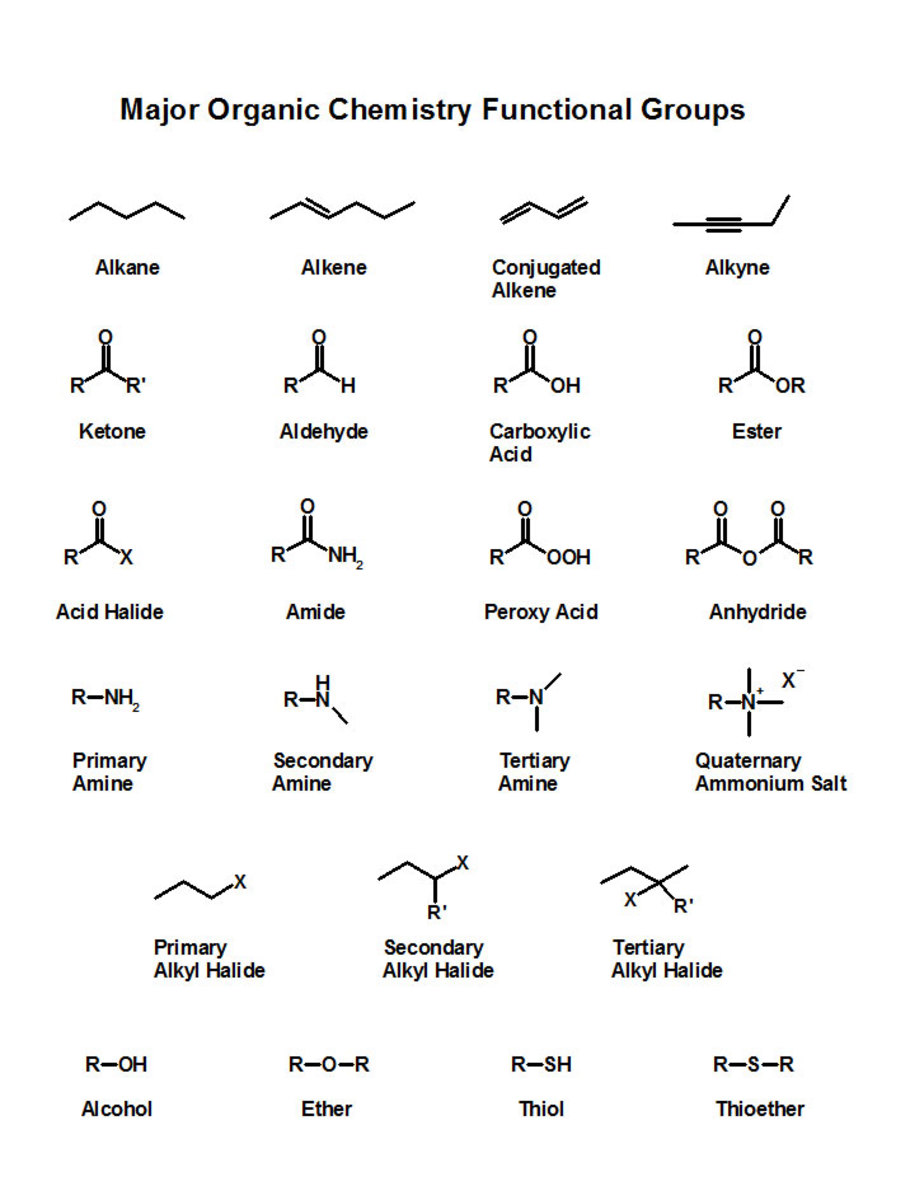Dyes And Their Uses - Part I
Beautiful Colors
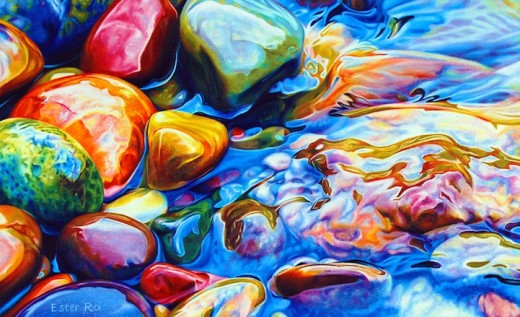
Famous Cricketer Lasith Malinga With Dyed Hair

What Is A Dye?
A Dye is a coloring substance having affinity to the fiber or the substrate to which it is applied (clothes like cotton, wool or hair,etc). A Dye is also known as a Colorant.
The Dye is usually applied in an aqueous solution, and it needs a "mordant" to color the fiber in a fast and effective manner.
A Mordant is a substance which binds the Dye to the tissues of the fabric by forming a coordination-complex. Examples of Mordants are Salts (increases the fastness of the colors), Vinegar (enhances the reds), Stale urine (the Ammonia helps to ferment indigo dyes). Many mordants can be harmful and the workers must be careful in handling them.
The process of Dyeing - Firstly, the substance containing the Dye (for example, Indigo for Blue color) which is called the Dyestuff is soaked in water. A colored solution appears. Then, the textile which is to be colored is put into the resulting solution which is called the Dye bath. The textile is kept in the solution for a long of time (for weeks). Sometimes, the Dye bath is stirred so that the fabric is colored evenly.
Dyes are applied to change the color of one's hair into any color (golden, red, orange, etc).
Picture Showing Dyeing Cloth
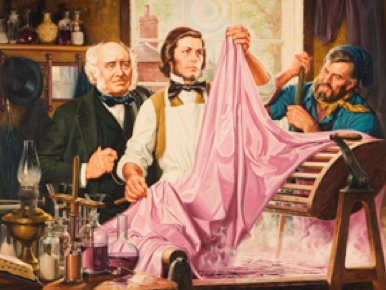
Ancient Ajanta Cave Paintings In India

History Of Dyes
Humans were always fascinated by color and had a tremendous liking for colored substances for hundreds and thousands of years. A Thousand years back, having a beautiful colored fabric was a high status symbol. Only the rich and powerful people could afford to own dyed products. Beautiful colored clothes are still used to decorate and seduce!
Dyeing of textiles go back to the Neolithic period. Earliest records of Dyeing processes have been found in China from about 2600BC! Dyed flax fibers have been found in the Republic of Georgia in a cave having dated back to 36000 years before Christ's birth. Archaeological evidence has shown that dyeing clothes and usage of colors were rapid in historical India (The Ajanta Ellora Cave Paintings have such beautiful and vibrant colors in them that they attract visitors from all over the world).
Some thousand years back, the only resources available to a dyer were easily obtainable natural plants and animals. Evidence is there, that some lichens were also used to create long lasting permanent colors.
- Records of the preparation and usage of Dyes in China go back to 2600 BC.
- The process of Wool dyeing had been established as a craft in Rome as long as 715 BC.
- When Alexander the Great of Macedonia conquered Susa in 331 BC, the Persian capital, he found 190 year old purple robes which were in the royal treasury and were very costly.
Alexander The Great Wearing Colored Clothes
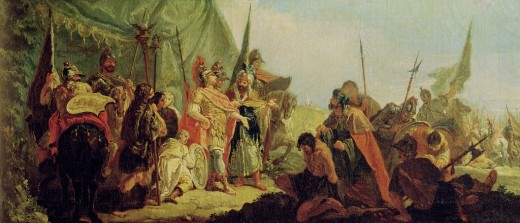
Difference Between Pigments And Dyes
Dyes are substances which have an affinity for the fiber/substrate to which they are applied. Dyes may be soluble or insoluble in a solvent. The method of application of some Dyes on the fibers require them to form insoluble compounds.
Unlike Dyes, Pigments have no affinity for the substrate to which they are being applied. Pigments are always insoluble in oil or other resinous solvents.
However, the distinguishing boundary between Pigments and Dyes is not very clear.
Natural Dye Sources
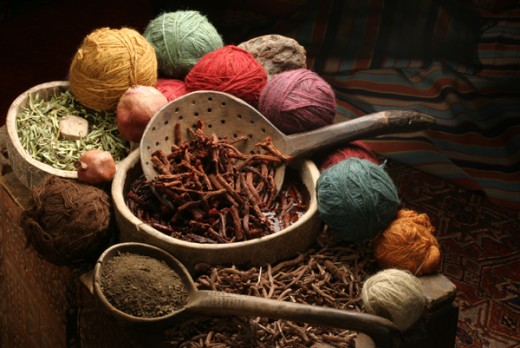
Classification Of Dyes
According to the sources, Dyes are classified into NATURAL DYES and SYNTHETIC DYES-
NATURAL DYES- The Dyes which are obtained from plant sources – roots, fruits, berries, bark, leaves, fungi, lichens.
Indigo and lichens produce a good color. The majority of the Dyes obtained from plant sources require a mordant (a fixing agent) to color the clothes effectively. A variety of shades may be obtained from the same dye by using various mordants.
It is impossible for us to know how and when the primitive man discovered that roots, stems of some plants can produce colors! Similarly, the primitive man also discovered that substances like salt, vinegar and stale urine fixes the colors (acts as a Mordant) to the fabric.
Natural Dyes (Used For Centuries By Man) And Their Sources -
- Yellow color (known as safflower) is obtained from the stems and leaves of Reseda luteola. (North American oak bark)
- Red color (known as cochineal) is obtained from insects such as Coccus ilicis and some roots of plants.
- Blue color (known as indigo) is obtained from the leaves of Indigofera tinctoria L.
- Black color (known as logwood) is obtained from the heartwood of Haematoxylon campechianum L.
- Purple color (known as Tyrian purple) is obtained from molluscs. (Murex brandaris)
Acid Dye Tee-Shirt
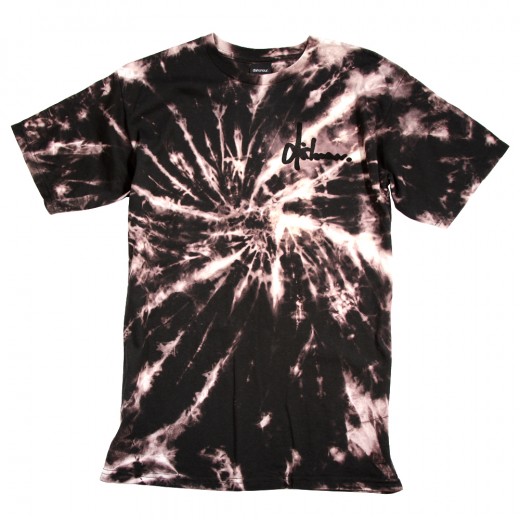
Direct Dye
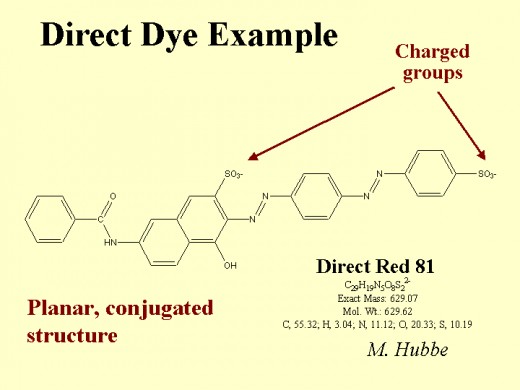
Copper Sulphate, A Mordant Dye
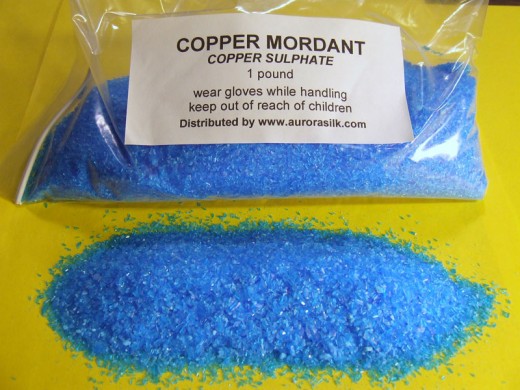
Vat Dye

A Disperse Orange Dye

Synthetic Dyes Or Chemical Dyes
Synthetic Dyes replaced the traditional usage of Natural Dyes after William Henry Perkin accidentally discovered a Synthetic Dye in 1856 known as Mauveine. Synthetic Dyes are cheaper than Naturally obtained Dyes. Further, Synthetic Dyes are much more colorful and long lasting.
Classification Of Synthetic Dyes According To The Dyeing Process -
- Acidic Dyes - These are water-soluble Dyes which are anionic in nature. Silk, Nylon and Wool are colored by Acid Dyes and a neutral to acidic dye bath is used. The Dye is attached to the fiber by a salt formation between the Anionic groups in the Acid Dye and the Cationic groups in the fiber. Artificial food colors are generally Acidic dyes.
- Basic Dyes - These are Cationic dyes which are soluble in water. Acetic acid is used as a Mordant to increase the fiber's absorption of the Dye. Acrylic fibers and Papers are colored by Basic Dyes.
- Direct Dyes - Direct dyes are used to color Cotton, Wool, Paper, Silk, etc. They are also used as pH indicators and as biological stains to stain micro-organisms in the labs.
- Mordant Dyes - They require a mordant to increase the fastness of the Dye. The combination of Mordants which are used to Dye the cloth, affect the final color of the fiber. Synthetic mordant dyes are important and are used for coloring Wool. The mordant Potassium dichromate is often applied after the initial Dyeing.
- Vat dyes - These Dyes can not color fibers directly and are insoluble in water. The Dye contains an Alkaline Salt which gets dissolved in water only when the basicity of the liquid is reduced. Denims are colored by Indigo which is an original Vat Dye.
- Reactive dye - They are the most permanent Dyes and have a covalent bond which fixes the Dye to fibers. Cibacron F is a Reactive Dye and it is easy to use the as it can be used in normal room temperature. Cotton can be easily colored by Reactive Dyes.
- Disperse dyes - They are used to dye polyester, nylon and acrylic fibers. Disperse Dyes were first manufactured for dyeing fibers made of cellulose acetate. These Dyes are insoluble in water. The dye is finely ground into small pieces in the presence of a special dispersing agent and then sold as a paste (or powder). A pressurized Dye bath is required with a Dyeing temperature of about 130 °C. The fine particles of the Dye gets dissolved and is absorbed quickly by the cloth.






